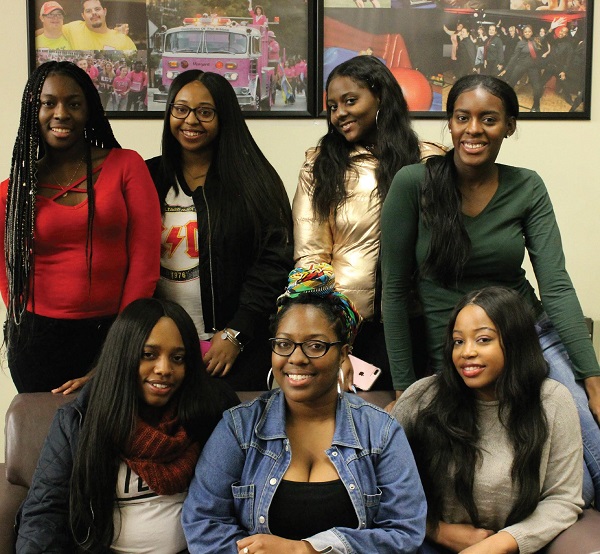
By Yaasmeen Piper
Assistant Editor-in-Chief
Dictionary.com defines a queen as a woman, or something personified as a woman, that is foremost or preeminent in any respect.
For black women, the term is often used to describe their role models, encourage themselves, or acting as their friend’s personal hype man.
This is what Sameria Singleton and Tysheerah Dennis Johnson had in mind when they created Queens of Color.
Queens of Color is an East Stroudsburg University group designed to address the ups and downs when it comes to being a black women.
Singleton who is president and vice president Johnson created the group in the fall of 2016, after realizing there was no group designated for black women to come and be themselves.
“We discuss topics that enhance personal growth in our members,” said Singleton, “such as self love, maintaining healthy relationships, and surviving college life as a black woman on a predominantly white campus.”
For thirty minutes to an hour, each of the women share their thoughts and experiences on the topic of that meeting.
The topic of one of the meetings during the fall semester was the definition of friendship.
One by one, the women went around saying what a true friend meant to them. Some of the words they used were loyal, honest and funny.
Sophomore Cassandra Bediako said she had no idea the group existed before but was glad when she found out.
“I would love to join [Queens of Color],” Bediako said. “It’s important to have a group specifically for black women so that black women can feel empowered together.”
The feeling of empowerment, Bediako said, comes from a larger number of black women coming together rather than in smaller forms.
“If it’s just one or two girls who are in a group not a lot of people feel that power,” she said. “But, once [we’re] in a group it’s much more than that. When you’re in a group you can spread more knowledge.”
Black women fall on the intersection of two minority groups: women and people of color.
Often, they take a double hit when it comes to societal issues.
“We have to be conscious to how people perceive us and try our best to fit in.” Singleton said. “It’s important to talk about [these issues] so we can help each other deal with these problems and find a space that allows us to be comfortable in our own skin.”
According to the National Women’s Law Center, while white women made 80 cents to every dollar a man makes, black women make only 63 cents to every white, non-Hispanic male.
Along with the gender and race wage gap, black women face sexism and racism within their own communities.
They are also victims of police brutality, but their stories are often untold.
While Trayvon Martin, Freddie Gray and Eric Garner flooded news stations and social media hashtages, Tarika Wilson,Tanisha Anderson and Rekia Boyd’s stories remain unkown.
Even something as simple as their hair have caused conflict in society.
“People are touching our hair, calling us ‘exotic,’” Bediako said. “We’re being killed, we’re being paid less. It’s so hard for black women. We are the lowest treated people out here.”
While the group does discuss heavier topics, there are still a lot of laughs, getting to know one another and bonding between the women, which Singleton and Johnson describe as their favorite part.
“To us, Queens of Color means that black women on campus have somewhere safe to come and build key relationships with each other,” Singleton said.
Queens of Color meet every Wednesday at 3 p.m. on the second floor of the University Center.
Their first event is the “Queens of Color Paint and Sip.” The night will be filled with “fun relaxation and creativity” and encourages people to come out and join them in creating “our own images that show how we perceive black womanhood.”
The event is Feb. 23 in Stroud 107, from 6-8 p.m. Contact Singleton at ssingleton@live.esu.edu for more information.
The Paint and Sip event is a part of a series of Black History Month programs.
The next function is “Black Mental Health Matters.”
Mental Health advocate Roundtree shares his story on being a black man dealing with depression and anxiety and his road to recovery.
This event is Wednesday, Feb. 21 6-9 p.m. in Beers Lecture Hall.
Other Black History Month events include: the annual soul food dinner at Dansbury Commons, a special Phi Beta Sigma screening of “Black Panther” at Pocono Cinema, discussions on the use of the n-word and the history of sports and protests and more.
To view the full list of Black History Month events visit ESU Insider at http://quantum.esu.edu/insider/
Email Yaasmeen at:
ypiper@live.esu.edu

